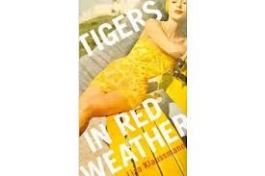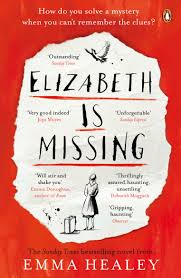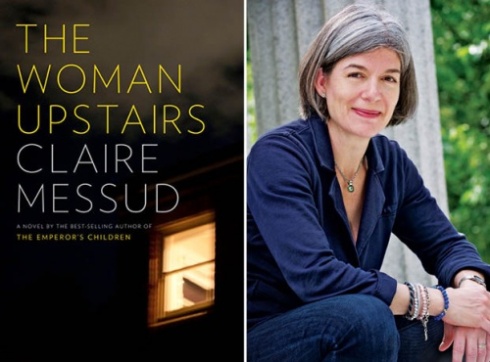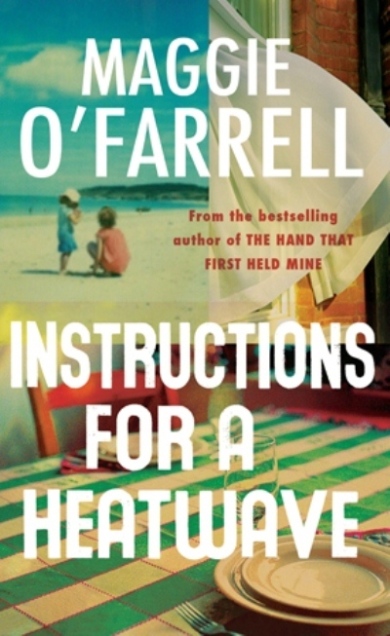The Secret History Donna Tartt
April 4, 2014 at 4:24 pm | Posted in Award winners, Middle Weight Fiction, Popular Fiction, The Secret History | 1 CommentTags: Book Clubs, book review, Book Reviews, bookclub, Bookreviews, good book reviews, Great Reads, popular fiction, recomended reads

It is understandable how Donna Tartt’s ‘The Secret History’ became a long-term bestseller and conquered a place in so many book lovers hearts. The story centered on a group of young bright affluent students at an exclusive Vermont College in the 1980’s roaming wild and burning through money is exceptionally engaging .and compulsively addictive.
The young group is composed of a variety of apparently sympathetic characters Richard who, unlike his peers, is on a scholarship to the exclusive college and is at great pains to conceal his blue-collar roots, twins Camilla and Charles known for their manners and gentle ways, Henry the emergent leader of the group remarkable for his adaptability to changes in circumstance and ability to mix easily with all sorts of people and also Francis and Bunny who enjoy all life has to offer with great self-assurance. What the characters all have in common is that they are all students of the charismatic erudite Professor Julian Morrow who teaches them Classics exclusively to a level of detail and reverence far above the academic norm.
Inspired deeply by their passionate teacher a few members of the group perform a Dionysian rite one night (a rite designed to work the worshiper into a state of ecstasy in order to feel the power of the gods through wine, dancing and often sexual expression) but the rite has truly gross consequences for the group which go on to drive the plot to even wilder and darker places and the death of Bunny Corcoran (whose death is revealed to the reader in the first line of the novel). 
Do not look for redemption, regret or guilty melancholy from this group, as a reader the novel demands that one must think much bigger when it comes to this motley crew and contemplate openly Donna Tartt’s brilliant subtle suggestions that Henry may himself be the devil incarnate and that in this existential world absolutely anything is possible once you have the nerve and stomach for it.
The plot is set in the familiar routines of college life against the rich dripping backdrop of the classical world of Greek and Latin language, prose and poetry. Donna Tartt’s prose is just so accomplished that at times it feels like God himself has lifted the telephone to call you personally and reveal some select mysteries of the world;
‘…there was never any doubt that he (Henry) did not wish to see us in our entirety, or see us, in fact, in anything other that the magnificent roles he had invented for us: genis gratus, corpore glabellus, arte multiscius, et fortuna opulentus – smooth cheeked, soft-skinned, well-educated, and rich. It was his odd blindness, I think, to all problems of a personal nature which made him able at the end to transmute even Bunny’s highly substantive troubles into spiritual ones.’
The novel in haiku; murderous thoughts fly, money and nerve conquer all, but it takes just one
‘The Woman Upstairs’ vs. ‘Instructions for a Heatwave’
November 10, 2013 at 2:59 pm | Posted in Great for Book Clubs, Instructions for a Heatwave, Middle Weight Fiction, The Woman Upstairs | 3 CommentsTags: Book Reviews, bookclub, good book reviews, new fiction
‘The Woman Upstairs’ vs. ‘Instructions for a Heatwave’
I love both Claire Messud and Maggie O’Farrell. They are both accomplished, polished storytellers and professionals of emotionally awakening prose. In 2006 Claire Messud’s ‘The Emperors Children’ moved me in a way no other piece of literature had. And in 2005 I sacrificed much sleep in reading Maggie O’Farrell’s ‘The Distance Between us’.
‘The Woman Upstairs’ deals with a very interesting and perhaps under-explored topic that of a woman’s disillusion with her place in the world and the crushing binds of familial duty.
Women are expected to be good and nice and ‘The Woman Upstairs’ shows this to be a perennial and generation busting expectation even in the 21st Century. But most importantly ‘The Woman Upstairs’ deals with the unapologetic and growing anger a woman feels when she finds the time to think broadly about her life in this context.
Messud’s leading heroine Nora Eldridge is mad as hell when we first meet her;
‘How angry am I? You don’t want to know.’
Nora desired to be a fine artist but was counseled by her parents to become a teacher instead and have a stable career. Familial circumstances then caused her to devote much time to taking care of her terminally ill mother and then her aging father to the detriment of her own life and dreams. These limits in her life caused her to develop feelings of self-doubt and cowardice that prevented her from living fully and without fear.
A new young pupil in Nora’s elementary school brings into her life an exotic and beautiful family of Lebanese origin. True scholars and artists they bring Nora into their glamorous life of culture and freedom. Nora at lasts tastes the life she has always dreamed of but quickly becomes precariously close with each member of the family as they become for her the family she never had.
The prose and plot is not perhaps as captivating as that of ‘The Emperors Children’ but this novel is just as important as it asks in every chapter questions about a woman’s place in the world, it questions the real and unrealistic expectations of a woman and looks at the importance of a woman’s relationship with herself.
Set in London during the heatwave of 1976 ‘Instructions for a Heatwave’ is a novel based around a family of five whose patriarch tells his wife he is popping out for a newspaper and never comes back.
This brings the three adult children back together to their family home as the search for the AWOL father gets underway. In close proximity to each other the children’s own problems and life situations leak out and brew all hot summer long. As we learn about the human problems each adult child faces the novel becomes a great depiction of a real family facing down difficult marriages, lost dreams, unplanned pregnancies and the worst parts of their personalities hotting up under the pressure of the heatwave.
The reader never assumes one member of the family could have a known explanation for the fathers leaving or that the intimacy of this secret could bring the family closer together. One of Maggie O’Farrell’s greatest traits as an author is to find intimacy in unusual places; in explosive secrets, in geographical distances or in different life choices and how they can help one to appreciate another. Set against the raging summer heat the secrets of the novel cook to boiling point and perhaps like a full moon the characters are unusually affected by the unrelenting high temperature of the summer of 1976.
Maggie O’Farrell’s novels love to suggest that families and marriages are not always as they seem and that secrets may often be at their best when revealed. This latest novel does just that and is a delicious and rapturous addition to her catalogue.
Haiku; The woman upstairs, finds herself in the heatwave, with no more secrets
Rules for formulaic fiction
April 11, 2013 at 3:47 pm | Posted in House Rules, Popular Fiction | 4 CommentsTags: Book Reviews, Books, popular fiction
House Rules by Jodi Picoult
Hodder 2010
House Rules is Jodi Picoult’s seventeenth novel and the first Jodi Picoult book I have read. The title refers to the rules that govern the home of Emma Hunt and her two sons one of whom Jacob lives with Asperger’s Syndrome; an autism spectrum disorder that is characterized by significant difficulties in social interaction and repetitive patterns of behavior and interests.
The plot is quite interesting; Jacob’s social skills tutor is found dead and Jacob’s mother can’t rule out the possibility that Jacob may have killed her due to Jacob’s preoccupation with forensic science and crime scenes. Jacob’s Asperger’s behaviors– not looking people in the eye, yes/no answers and stimulatory tic’s coupled with his kooky hobby make Jacob appear guilty to the police and prosecution team. Emma must summon all her maternal courage and finances to defend Jacob in a trial that tears through their family life and house rules.
The novel has a cast of characters just as you imagine it would need. A handsome and struggling young lawyer, a brave single father town sheriff, a renegade father who left Emma and her sons when Jacob was first diagnosed. Emma is the most thoughtful character in my opinion who shows the rationale and love you would expect of a devoted mother. The novel is driven by hundreds of small chapters of each characters viewpoint which do weave together to show a well plotted driven novel.
Would I read another Jodi Picoult novel? No probably not. If this novel is symptomatic of her other sixteen novels it’s as if I have read them already. Although well researched it felt formulaic. Although quite compelling it felt quite empty. Jodi Picoult’s website however deserves respect, full of reading aids and book club questions it reveres the art of the novel and while her novels may not be to my taste they obviously are to millions of other readers. 
House Rules in Haiku: Jacob and Emma, together look for the truth, but can it be found?
Tigers in Red Weather
February 16, 2013 at 6:00 pm | Posted in Great for Book Clubs, Middle Weight Fiction, Popular Fiction | 1 CommentTags: Book Clubs, Book Reviews, popular fiction
 Tigers in Red Weather by Liza Klausmann Picador 2013
Tigers in Red Weather by Liza Klausmann Picador 2013
Tigers in Red Weather is a family epic starting at the end of World War two which is successfully told from five familial perspectives culminating in a family portrait which only the reader is privy to. It is such an accomplished and insightful read it is hard to believe that it is a debut novel.
The plot spans two decades beginning with main characters husband and wife team Hughes and Nick who are young newlyweds setting up home after Hughes return from the Navy. We are then introduced to Helena Nick’s cousin with whom she is extremely close. Both women are determined to defy normality and the status quo in their lives at all costs. Nick’s cousin Helena is preparing to leave for Hollywood and a new life and Nick is determined never to be a bored housewife.
Over two decades the two women’s lives unfold in ways neither of them predicted. Disillusionment sets in and is softened with gin soaked summers spent together with their families in Tiger House where white picket fences and tennis lessons abound. This is also a coming of age story for the women’s two offspring Nick’s daughter Daisy and Helena’s son Ed with a midsummer murder worked into the plot. By their attempts to defy convention oddly the two women find themselves and the love they crave. Following the five narratives we see the consequences of the two women’s attempts at avoiding conventional life at all costs subverting family life and allowing darkness into their lives.
The story is well plotted, interesting and Klausmann’s writing is meaningful. It is a character driven novel all of whom are well developed and is a very enjoyable picture of a family growing from the early 1950’s to 1970’s dotted with fine and beautifully written insights into human life and love along the way. For regular readers of middle weight fiction this will not disappoint.
Haiku: Tigers all about, where you might not expect them, will create a storm!
When is a book review any use?
November 13, 2012 at 11:29 am | Posted in Book Club Ideas, Literary Academy | 1 CommentTags: Book Reviews
It seems of late that a lot of reviews of newly released fiction are over enthusiastic and vague leading readers in search of a compelling and original read astray.
Big literary figures comments appear on the backs of new novels celebrating fictional triumphs the like of which we have never seen before but often these claims turn out not to be true.
Clever marketing can lead readers astray and with an explosion of debut authors and a sea of fiction how can we pick a book that suits us?
While choosing a book can always be a risk, especially if the author is new, here is Sarah’s Books list of ways to reduce this risk!
1. Trust yourself and follow your interests: no matter how attractive a book is or how compelling the marketing drive, if you’re not interested in political crime/vampires/chic lit/historical fiction you will not enjoy the book!
2. Take note of the publisher on the spine of the books you like. A favourite publisher of mine is Bloomsbury I know they are purveyors of fine interesting fiction that suits me.
3. Stick with reviewers that you trust. E.g The Guardian newspaper reviews and Eileen Battersby’s recommendations rarely let me down as I like their taste.
4. Get to know the booksellers in your local bookshop. They will be the most discerning and well read people and can make individual recommendations just for you.
5. If your local bookshop has a blog or does book reviews use them.
An Independent Author
August 19, 2011 at 12:40 pm | Posted in Literary Fiction | 2 CommentsTags: Book Reviews
‘Independent People’ Halldor Laxness Vintage Books 1946
I was inspired to read Halldor Laxness’s ‘Independent People ‘ because of its similarity to Rose Tremain’s most wonderful novel ‘The Colour’ which dealt with the mid 19th Century New Zealand gold rush. In ‘The Colour’ the characters pursuit of dreams of gold become for them in tandem a source of all-consuming hope and madness. 
‘Independent People ‘ deals with the struggles of early 20th Century Icelandic sheep farmer Guðbjartur Jónsson who pursues a dream for independence above all things in the social reality of capitalism and materialism of his time. Very like Tremain’s characters Guðbjartur is stubborn and often brutal in his pursuit of his dream in the middle of which World War 1 breaks out and becomes for Guðbjartur a financial asset as the price and demand for his mutton soars.
After working for eighteen years for a wealthy landowner Guðbjartur earns enough money to buy a piece of land to live off and marries the beautiful but tragic Rosa whom he frequently leaves alone in winter in dogged pursuit of familial independence.
Rich in scope and emotion this is a rewarding novel that earned the author a Nobel Prize for literature in 1955. It’s capitalist and materialist indictments are balanced by the characters involvement in Icelandic folklore culture in particular the poetry of rural Iceland that survived and blossomed during these times.
Not an easy read but the most rewarding novel’s are often demanding of their readers. As rich and eloquent as a novel should be and its economic theme is not lost in our current climate.
Click here to view this book in DLR Library Catalogue.
This is not a dream………..
June 3, 2011 at 1:24 pm | Posted in Great for Book Clubs, Middle Weight Fiction, Sex and Stravinsky | 1 CommentTags: Book Clubs, Book Reviews, Books, Great Reads
‘Sex and Stravinsky’ Barbara Trapido, Bloomsbury, May 2010
Not unlike Shakespeare’s ‘A Midsummer Night’s Dream’ Barbara Trapido’s new novel is a story of demented romantic and filial love but unlike Shakespeare’s comedy for Trapido’s characters none of it is a dream. 
The choices of two sets of couples are compounded by impulse and coincidence. Caroline a beautiful and brilliant tall Australian falls under the charm of Josh a Jewish South African who both in pursuits of their careers come to live in England. Meanwhile Hattie and Herman make a life for themselves in South Africa unaware of the momentous connection they have with Caroline and Josh.
The story is set between Trapido’s native South Africa and England during the late 1970’s gracing the story with scope and bathed in the historical half-light of South Africa coming out of apartheid. The geography of the two locations allows the idea of serendipity to filter through as the story’s tenant. No matter how far these characters diverge from the paths they were meant to go down fate will find them and realign things to how they should be. This in an oridnary novel could be bland but Trapido is under the wing of Bloomsbury publishers who never publish anything but inventive writing.
Like magic, although Trapido’s novel makes confusing and rapid choices if you believe in her, the incredible becomes completely credible.
Freedom comes in Time
April 14, 2011 at 3:54 pm | Posted in Award Nominated, Freedom, Great for Book Clubs, Literary Fiction | Leave a commentTags: Book Reviews, bookclub, Books
Jonathan Franzen ‘Freedom’ Macmillan, August 2010
The American middle class has been deconstructed and it is fantastic. Believe what you hear about this book Jonathan Franzen’s ‘Freedom’ is a truly great state-of-the-nation, deconstruction of our times, polemic epic of a novel.
The story explores the public and private life of a middle class american family ‘the Berglunds’ and is electrified with Franzen’s own interest in socio cultural issues such as the post 9/11 economy, nature conservation and overpopulation. This gives the novel it’s serious literary value and the reason why I believe it is becoming so acclaimed.
When the novel opens the parents in this family saga aren’t doing well. She is drinking, he is working for a corrupt coal company and they have greatly drifted apart. Each family member has ideas of reality, entitlement, love, morality and general life expectations that mostly are disappointed. A lot of novels look at these ideas too but Franzen couples them with global issues, hot american topics and ethical conflicts (at one stage father and son, Frank and Joey, become embroiled with a Haliburten like company in a very ill-advised financial pursuit) and these coupled ideas are the tools Franzen uses to dig at and explore middle america with. The socio-cultural aspects of this novel work to create a swinging pendulum of doom that moves in time with the family’s own demise gaining weight with every swing it is a fantastic literary technique reminiscent of Ian McEwan’s ‘Solar’.
This family are written in 3D every dimension of them is soaked in detail and their humanity lend’s the story its page turning compulsion. Between them they are vain, self-pitying, passive aggressive, disloyal, unfaithful, uncommunicative, hungry for love, sexually promiscuous, mercenary, angry and vulnerable. Franzen is a natural writer in showing how they are all these things only in their struggle to find meaning in a cheapened world and the reason that readers like them so much is because they are struggling. They know something is very wrong the world which they don’t accept and all of them are on the quest for transcendence in their own individual ways.
 With this novel Franzen is the first author to appear on the cover of Time magazine since Stephen King did ten years ago. This is one of the most hyped novels in a long time. It is a fantastically well crafted story but so is Curtis Sittenfeld’s ‘American Wife’ and so is Ian McEwan’s ‘Solar’. It is unfortunate that this novel has become a little overshadowed by the hype and a precocious side to the success of this novel is now showing with the New York Times describing Franzen’s own comparisons of ‘Freedom’ to ‘War and Peace’ as ‘laughably conceited’.
With this novel Franzen is the first author to appear on the cover of Time magazine since Stephen King did ten years ago. This is one of the most hyped novels in a long time. It is a fantastically well crafted story but so is Curtis Sittenfeld’s ‘American Wife’ and so is Ian McEwan’s ‘Solar’. It is unfortunate that this novel has become a little overshadowed by the hype and a precocious side to the success of this novel is now showing with the New York Times describing Franzen’s own comparisons of ‘Freedom’ to ‘War and Peace’ as ‘laughably conceited’.
An unbelievably well executed novel in good company with Ian McEwan, Don Delillo, Damon Galgut and Curtis Sittenfeld but I haven’t been carried away with the hype to value it as anything more than this.
Haiku; Will ‘Freedom’ now be the new book club selection for Oprah Winfrey?
Blog at WordPress.com.
Entries and comments feeds.









